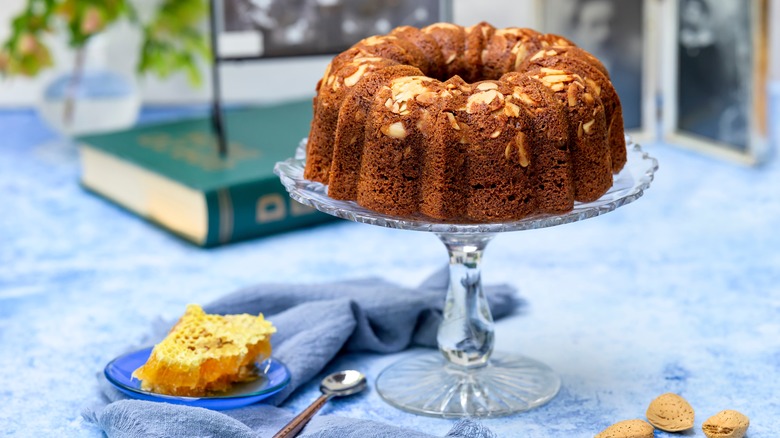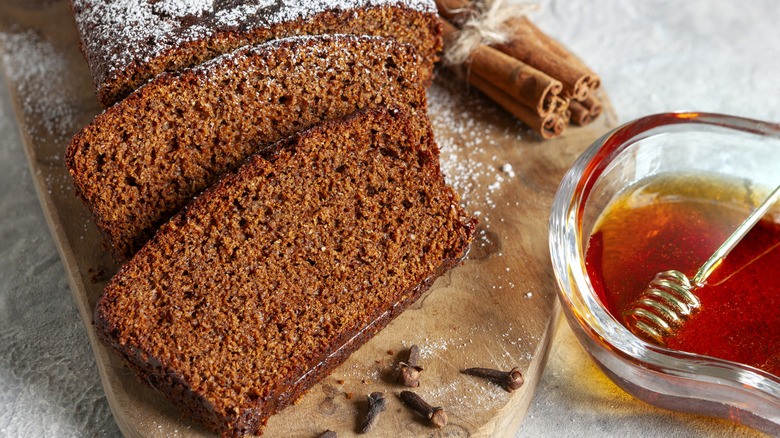The Sweet Symbolism Behind Rosh Hashanah Honey Cakes
In the Hebrew calendar, Rosh Hashanah, which starts on October 2 this year, is the beginning of the Jewish New Year. Instead of ringing in the year with a champagne toast, hoppin' John, or any of the numerous other good luck foods associated with January 1, Rosh Hashanah celebrations include their own symbolic foods. Among these are carrots (meant to bring blessings), pomegranates (in the hope that our good deeds will be as numerous as their seeds), and fish (so we may be as ever-mindful of God as fish are of the water in which they swim). Honey, whether in the form of a cake or paired with apples as part of a Rosh Hashanah meal, has the rather obvious symbolic value of embodying hopes for a sweet new year.
Honey cakes also have a certain historic value for Ashkenazi Jews. (Ashkenazim are descended from Jews whose ancestors came from Central or Eastern Europe. Sephardic Jews, who make up a much smaller percentage of the U.S. population, have roots in Southern Europe, North Africa, and the Middle East.) In the Middle Ages, Ashkenazi students learning the Torah were given honey cakes as a reward, which was also a way for them to associate the sacred text with sweetness.
Honey cakes come in many different varieties
The traditional honey cake is tangentially related to gingerbread, as they share a common antecedent. To compare it to a Christmas treat, it may be more akin to fruitcake because both are on the heavy side and are, shall we say, not beloved by all. (As far as we know, though, there are no honey cake chucking events similar to Colorado's Manitou Springs Fruitcake Toss.) Since none of the Jewish dietary laws collectively known as kashrut stipulate that thou shalt not alter thy great-great grandmother's honey cake recipe, it's okay to switch things up.
Standard honey cake tends to be dense due to its low fat content, so adding more oil will make it moister. It's also heavily spiced. Dialing back the allspice and cloves may make it more appealing to the modern palate. Coffee, another traditional honey cake ingredient, can be balanced with additional flavorings like citrus or whiskey (and there are suitable alcohol options for those who keep kosher). The cake can also be combined with different desserts to make mashups such as honey carrot cake, honey angel food cake, or honey doughnuts.
It's also possible to make plant-based honey cake, although it won't be vegan unless you swap the honey for date syrup. Luckily dates are also a Rosh Hashanah staple symbolizing the same sweet wishes as honey. In fact, some would even have it that the biblical honey that would flow alongside milk in the Promised Land was actually meant to be date syrup.

